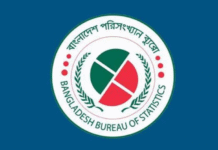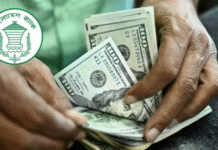
Final quarter overseas investment not included, says BIDA executive chairman
Having gone through a sharp rise in 2018, Foreign Direct Investment (FDI) inflows to Bangladesh have seen a sharp decline by 56%, to $1.6 billion in 2019, according to a report of the United Nations Conference on Trade and Development (UNCTAD).
The apparel sector, a $34 billion local industry, was an important FDI recipient, with major investment from the Republic of Korea, Hong Kong and China in the year.
The UNCTAD report, ‘World Investment Report 2020,’ was globally released yesterday.
However, the Bangladesh Investment Development Authority (BIDA) claimed the FDI in the country was $2.87 billion last year, as the UNCTAD report did not include the investment figure made in the final quarter of last year.
“Inflows to Bangladesh, an important FDI recipient in South Asia, fell by 56 per cent to $1.6 billion. The decline reflects an adjustment from a record-high level in 2018. The export-oriented apparel industry remains an important FDI recipient, with major investors from the Republic of Korea, Hong Kong and China,” said the report.
In 2020, the sector is expected to be severely affected by factors like closed down factories and falling global demand for apparel goods, says the report.
As of April 2020, the country’s garments manufacturers and exporters association estimated that more than $3 billion worth of exports had been cancelled or suspended, adds the UN report.
“The figure ($1.6 billion) mentioned in the UNCTAD report does not reflect the real picture of Bangladesh’s FDI as it did not add the investment of the last quarter of 2019. As per Bangladesh Bank data, the FDI was $2.87 billion in 2019,” Sirajul Islam, executive chairman of Bangladesh Investment Development Authority (BIDA), told Dhaka Tribune.

Since the FDI depended on the global economic situation and willingness of investors, it could be up or down anytime, he added.
“Sometimes there is a big inflow from a certain sector, which pushes up the trend,” Sirajul said.
“In 2018, we had good investment in tobacco and the stock market, which helped to register a sharp rise by 68% over last year,” he explained.
The sharp rise in FDI in 2018 was caused by a big investment by a Japanese company and Chinese strategic investment in the Dhaka Stock Exchange (DSE), which was not a regular phenomenon, Sirajul noted.
In 2018, Japan Tobacco invested $1.47 billion to acquire United Dhaka Tobacco, a venture of Akij Group, while two Chinese stock exchanges invested Tk947 crore for buying a 25% stake of the Dhaka Stock Exchange.
Meanwhile, economists have called for an investigation to look into the anomaly between the data of the Bangladesh Bank and the UNCTAD.
“The FDI inflow was supposed to decline in 2019 as in the previous year FDI increased due to some big-amount investment in tobacco and the stock market,” Zahid Hussain, former lead economist of the World Bank, Bangladesh, told Dhaka Tribune.
In Vietnam, India and other South Asian countries, the investment patterns diverged and had continuity in overseas investment because of their business environment and skilled workforce in different sectors, said the economist.
In attracting regular FDI in different sectors, Bangladesh must complete a few Special Economic Zones (SEZs) and ensure a favorable investment climate, he suggested.
Regional and global scenario
FDI inflows to the nine Asian LDCs fell for the first time in eight years , to $9 billion, a decline of 27%. The top three FDI recipients – Cambodia, Myanmar and Bangladesh – accounted for 94% of those inflows.

With the Covid-19 pandemic impacting investment, global FDI flows are forecast to decline by up to 40% in 2020, from their 2019 value of $1.54 trillion. This would bring FDI below $1 trillion for the first time since 2005.
Projection for 2021
FDI is projected to decrease by a further 5% to 10% in 2021, with a recovery initiated in 2022. A rebound in 2022, with FDI reverting to the pre-pandemic underlying trend, is possible, but only at the upper bound of expectations.
The Covid-19 outlook is highly uncertain. Prospects depend on the duration of the health crisis and on the effectiveness of policy interventions to mitigate the economic effects of the pandemic, notes the report.
Policy unpredictability a barrier
In the recent time, there was tussle between the government and the telecommunication companies, which gave a bad signal to potential investors.
“Regulatory predictability is a key indicator for attracting investment. The recent dispute over the audit claim with telephone companies gave the global investors a bad impression,” Centre for Policy Dialogue (CPD) Distinguished Fellow Mustafizur Rahman told Dhaka Tribune.
How to achieve the target
Bangladesh needs to gear up its domestic investment to give a message to the global investors that business is happening here in a suitable climate, experts say.
“To lure foreign investors, the government has first to make the special economic zones (SEZs) ready,” said Rahman.
If the government could complete the projects within the deadline, FDI inflow would increase as targeted, observed Rahman.
“There is progress in hard infrastructure, though not enough. To make the business process quicker, the government has to concentrate on soft infrastructure such as efficiency of port and other services to ensure smother delivery,” said the economist.
The government has taken initiatives to establish 100 special economic zones (SEZs) by 2030.










